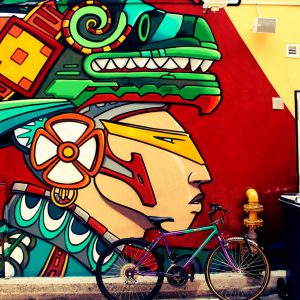Writing on the Wall: Street Art in Graffiti-free Singapore
June 29, 2021

The annual Singapore Street Festival Exhibition (SSF) aims to celebrate the youth community and is usually held between June and July. Events involving street art in SSF are especially interesting because the Singapore government has traditionally opposed street art and graffiti. In ‘Writing on the Wall: Street Art in Graffiti-free Singapore’ (International Journal of Urban and Regional Research, 2018), Associate Professor Chang Tou Chang (NUS Department of Geography) examines the changing government perspectives on creativity and legality in Singapore and surveys the sentiments of the artists and members of the public.
A/P Chang observes that the Singapore government’s softened stance towards graffiti and street art shows a desire to stimulate creativity in the city and community. The Urban Redevelopment Authority launched the PubliCity programme in 2013, which encouraged street art in certain public spaces to enliven them – the Rail Corridor was one of them. Since the early 2010s, the government has also allowed graffiti-inspired pieces on the walls of privately owned buildings, such as those in Kampong Glam and Chinatown. However, government regulations were also established to prevent ‘too much creativity’. Artists need to get permission from authorities and are not allowed to include controversial and seditious themes in their works. There are also certain colour guidelines for artworks done in historic neighbourhoods like Chinatown.
A/P Chang’s interviews revealed that some artists fear that legalisation of street art might constrain them as they become at the behest of the Singapore government and lose the independence of will which is a hallmark of street art. The lack of spontaneity is not lost on the casual observer. One member of the public said that the art at Haji Lane felt like a top-down commercial affair, and another bemoaned the lack of ‘true’ street art in Singapore. However, there were also positive responses. The director of RSCLS, an art collective founded by a street artist, said that having state-sanctioned street art is already a breakthrough and constitutes an opportunity to safeguard street art even if it meant a partial compromise.
A/P Chang concludes that there has been a simultaneous unleashing and leashing of creativity as a result of the state’s recognition and regulation of street art in Singapore. Looking ahead, Singapore must continue to calibrate artistic content and engagement to suit artists’, community and local needs.
Read the article here.
